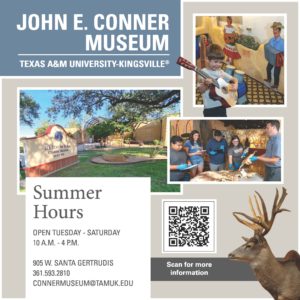The Rio Grande Valley is home to an extensive range of wildlife. This area is home to everything from the protected Texas tortoise to pesky javelinas. While many citizens are aware of the vast variety of wildlife found in our backyard, many are unaware of the endangered spotted cat roaming around in the brush. This spotted cat happens to be an ocelot. Ocelots are small wild cats that range from 16 to 25 pounds. They are light brown and covered in brown and black spots. These cats once roamed throughout Texas and the United States. However, this is no longer the case as it is predicted there are only around 80 left in Kennedy, Willacy and Cameron counties as of 2018. It is believed that ocelot populations began diminishing due to habitat loss and fragmentation of their preferred dense habitat.
Luckily ocelots are not going down without a fight. There are many conservation efforts going on within the state trying to conserve these cats and ensuring they will be around for years to come. Texas A&M University-Kingsville is considered to be the hotspot for ocelot research. Our very own Dr. Michael Tewes, of The Caesar Kleberg Wildlife Research Institute is an expert in ocelot research and has been studying this elusive animal for more than 30 years. Tewes has found that there are two isolated populations of ocelots, the smaller Refuge population in Cameron County and the larger Ranch population in Willacy and Kennedy counties. Ocelots also have been declining because of vehicle collisions because of expanding road networks in the region.
Thankfully colleagues of Tewes’ like, Jason Lombardi, a PhD candidate from Texas A&M University-Kingsville, don’t have an issue discussing the importance of conserving this species. In an interview with Lombardi, he stated that the most important thing the public can do to help this species is to raise awareness of the ocelots’ presence in The Rio Grande Valley. He has found that many people locally do not know what ocelots are, or even that they are endangered. Once we are able to build a grander understanding of the issue this species is facing, we can then go on to more extensive research. Currently. the university is working on ways to reduce highway mortality of ocelots as well as building relationships with private landowners who are the key to ocelot recovery in South Texas.
With more applied research like these being conducted by TAMUK, this species has a greater chance of survival.
With the help of researchers like Tewes and Lombardi, the ocelot is one step closer to recovering from the dangers of habitat destruction and road mortality. While we may not all be researchers, it is important that we are aware of the species and the dangers it is facing. We must advocate for the species and be a voice for them. Ocelots cannot tell us they are suffering, but we can make ourselves aware of their suffering and be the difference they need.
